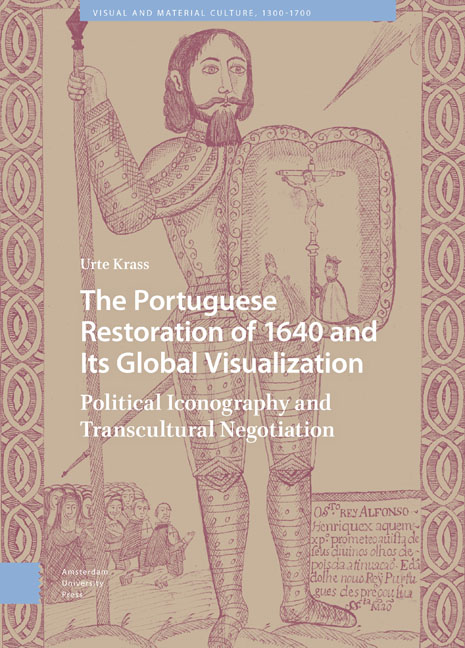 The Portuguese Restoration of 1640 and Its Global Visualization
The Portuguese Restoration of 1640 and Its Global Visualization Published online by Cambridge University Press: 13 February 2024
Abstract: Among the first tasks of every newly installed ruler is having portraits of him- or herself made and distributed. The new Braganza king, however, had little chance of contracting first-class portraitists. The ambassadors who took royal portraits with them on their diplomatic missions abroad thus recognized these paintings’ virtue as being not in their high artistic quality, but in their ability to reveal truth about the person portrayed. The chapter traces the use of royal portraits and family trees on diplomatic missions to Paris, Rome, and London. The treatise Lusitania Liberata of 1645, presented to the English King Charles I, is then subjected to an in-depth analysis. Its engravings represent an ambitious attempt to reconceptualize Lusitanian iconography.
Keywords: royal portraits, Paris, Rome, England, Theatrum Europaeum, family trees, Lusitania Liberata
Portraits
Research on the theory of the Early Modern ruler portrait has shown that kings commissioned representations as one of their first acts upon taking office. The portrait was constitutive of that office: a real king was one who had been portrayed. As it happens, in the context of the reinstalled Lisbon court, little evidence has been preserved about the important task of commissioning official portraits. The portraits painted in the first years after John came to power can be counted on one hand; only two exist today, and these present a rather sobering picture of both artistic ability and possibility. The new king's portrait painters could not compete with the quality of the Spanish royal portraits; and the works do not reveal any iconographic or stylistic novelty.
This is understandable since during the Iberian Union, the production of portraits in Lisbon lay idle. During this period, high-ranking Portuguese nobility commissioned portraits of themselves and their families from Spanish painters. In Vila Viçosa, at the court of Duke John II—the future king—and his father, Teodósio II, painting was nevertheless consistently valued. In 1637, the Braganzas thus sent the painter Manuel Franco to Madrid to receive advanced training in the art of portraiture painting. Contemporary Italian painting was held in esteem and collected on grounds of prestige.
To save this book to your Kindle, first ensure [email protected] is added to your Approved Personal Document E-mail List under your Personal Document Settings on the Manage Your Content and Devices page of your Amazon account. Then enter the ‘name’ part of your Kindle email address below. Find out more about saving to your Kindle.
Note you can select to save to either the @free.kindle.com or @kindle.com variations. ‘@free.kindle.com’ emails are free but can only be saved to your device when it is connected to wi-fi. ‘@kindle.com’ emails can be delivered even when you are not connected to wi-fi, but note that service fees apply.
Find out more about the Kindle Personal Document Service.
To save content items to your account, please confirm that you agree to abide by our usage policies. If this is the first time you use this feature, you will be asked to authorise Cambridge Core to connect with your account. Find out more about saving content to Dropbox.
To save content items to your account, please confirm that you agree to abide by our usage policies. If this is the first time you use this feature, you will be asked to authorise Cambridge Core to connect with your account. Find out more about saving content to Google Drive.